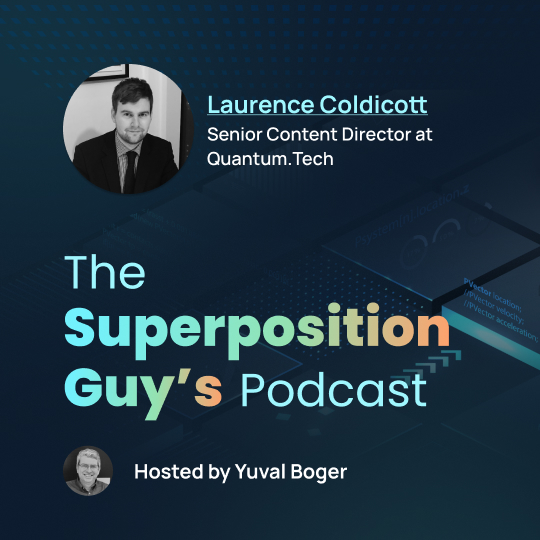Insider Brief
- Researchers from CNRS report that quantum annealing may help address certain types of scheduling problems.
- The team found that quantum annealing performed competitively against classical computer solvers for Resource-Constrained Project Scheduling Problem.
- The study was conducted using the D-Wave Advantage 6.3 quantum annealer, equipped with 5,640 qubits.
The time might be up for traditional scheduling, thanks to quantum annealing. Researchers report that quantum annealing may help address certain types of scheduling problems, according to a recent study in Scientific Reports.
The team said that quantum annealing offers significant potential for small to medium-sized scheduling problems, performing competitively against classical computer solvers for Resource-Constrained Project Scheduling Problem (RCPSP), a complex and highly relevant issue in operations research.
They added that the study — pioneering in several respects — also offers insights into both the potential, as well as the limitations of current quantum computing in tackling real-world tasks.

The RCPSP is a classic problem in project management where tasks must be scheduled within given resource constraints, often seen in industries like construction, manufacturing and software development. For example, a construction project might involve coordinating different trades such as electricians, plumbers and carpenters, each with specific time frames and resource limits. Similarly, a factory may need certain teams to come to work in specific shifts to complete complex projects on time. When the number of variables increases, finding optimal solutions becomes more and more difficult.
According to the researchers, this study is a first in the field.
“To the best of our knowledge, this is the first study to apply quantum annealing to the RCPSP, marking a significant advancement in the application of quantum computing to operations research,” they write in the paper.
Study Approach and Findings
The research team, led by experts in quantum computing and operations research from CNRS, evaluated 12 well-known Mixed Integer Linear Programming (MILP) formulations of the RCPSP. They identified the most qubit-efficient formulation and converted it into a Quadratic Unconstrained Binary Optimization (QUBO) model, suitable for quantum annealing. The QUBO model was then solved using the D-Wave Advantage 6.3 quantum annealer, equipped with 5,640 qubits.
The study’s main finding is that quantum annealing shows significant promise, particularly for small to medium-sized scheduling problems. When compared with classical computer solvers, the quantum annealer demonstrated competitive performance, suggesting that quantum computing could become a viable tool for tackling complex scheduling issues in the near future.
To rigorously evaluate the effectiveness of quantum annealing, the researchers introduced two metrics: Time-to-Target (TTT) and Atos Q-score. These metrics helped compare the performance of quantum annealing and reverse quantum annealing against traditional optimization techniques. The study also delved into advanced quantum optimization methods, such as customized anneal schedules, which fine-tune the annealing process to improve solution quality.
Real-World Implications
The findings hold significant implications for various industries where scheduling efficiency is critical. For instance, in manufacturing, optimizing the scheduling of machinery and labor can lead to substantial cost savings and productivity gains.
Similarly, in the software industry, better project scheduling can result in timely product releases and improved resource allocation.
Limitations and Future Research
Despite its promising results, the study acknowledges several limitations.
“While our research offers valuable insights, it’s important to recognize its limitations, including the current constraints of quantum hardware and the need for improved embedding techniques,” they write.
One key limitation is the size of the problem instances tackled. The current generation of quantum annealers, including the D-Wave Advantage, is best suited for small to medium-sized problems. Larger, more complex scheduling problems still pose a challenge and will require further advancements in quantum hardware.
Additionally, the study relied on the “minor-miner” heuristic for embedding the QUBO model into the quantum annealer’s qubit graph. The “minor-miner” heuristic helps arrange and connect the problem’s components to fit within the quantum computer’s limited and specific structure of qubits. Essentially, this mapping allows the quantum computer to solve the problem more effectively.
This heuristic, while effective, may not always produce optimal embeddings, potentially impacting the solution quality. The researchers suggest that future work should explore alternative embedding techniques and other quantum computing methods, such as the Quantum Approximate Optimization Algorithm (QAOA).
Another area for future research is the integration of heuristic techniques to establish upper bounds for the scheduling problem, which could significantly reduce the number of variables needed in the QUBO model. This approach has the potential to enhance the scalability of quantum annealing for larger problem instances, according to the team.
The researchers include: Luis Fernando Pérez Armas, Stefan Creemers and Samuel Deleplanque.

















